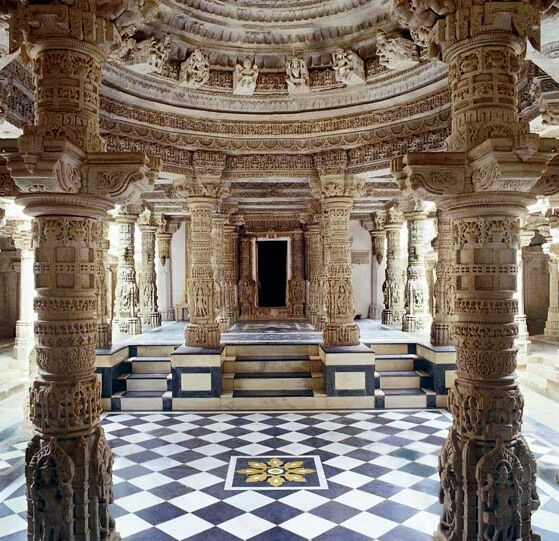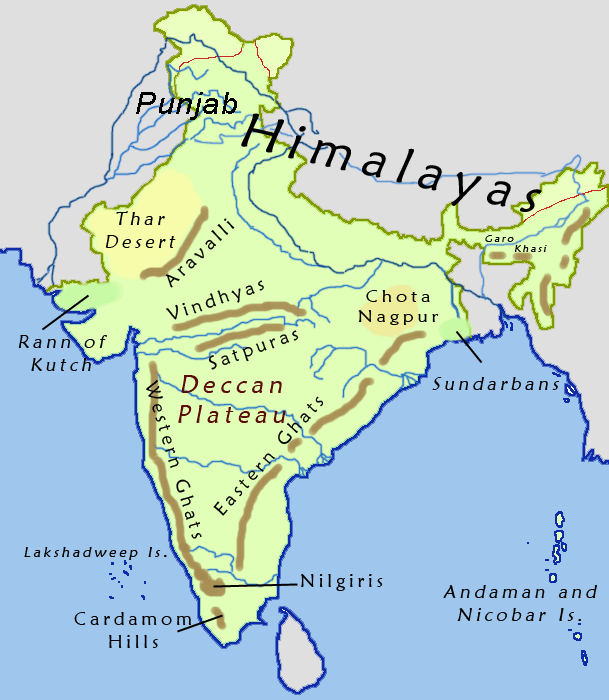|
Arbuda Mountains
Mount Abu () is a hill station in the Aravalli Range in Sirohi district of the state of Rajasthan in western India.The mountain forms a rocky plateau 22 km long by 9 km wide. The highest peak on the mountain is Guru Shikhar at above sea level. It is referred to as 'an oasis in the desert' as its heights are home to rivers, lakes, waterfalls and evergreen forests. The nearest train station is Abu Road railway station 28 km away. History The ancient name of Mount Abu is Arbuda. In the Puranas, the region has been referred to as ''Arbudaranya'' ("forest of ''Arbhuda''") and 'Abu' is a diminutive of this ancient name. It is believed that sage Vashistha retired to the southern spur at Mount Abu following his differences with sage Vishvamitra. There is another history story according to which a serpent named "Arbuda" saved the life of Nandi (Lord Shiva's bull). The incident happened on the mountain that is currently known as Mount Abu and so the mountain is named "Arbu ... [...More Info...] [...Related Items...] OR: [Wikipedia] [Google] [Baidu] |
Hill Station
A hill station is a town located at a higher elevation than the nearby plain or valley. The term was used mostly in colonial Asia (particularly in India), but also in Africa (albeit rarely), for towns founded by European colonialists as refuges from the summer heat and, as Dale Kennedy observes about the Indian context, "the hill station ... was seen as an exclusive British preserve: here it was possible to render the Indian into an outsider".Kennedy, Dane. The Magic Mountains: Hill Stations and the British Raj. Berkeley: University of California Press, c1996 1996. , http://ark.cdlib.org/ark:/13030/ft396nb1sf/ In India, which has the largest number of hill stations, most are situated at an altitude of approximately . History Nandi Hills is a hill station in Karnataka, India which was developed by Ganga Dynasty in 11th century. It was also used by Tipu Sultan (1751 - 1799) as a summer retreat. Hill stations in British India were established for a variety of reasons. One ... [...More Info...] [...Related Items...] OR: [Wikipedia] [Google] [Baidu] |
Aravalli Range
The Aravalli Range (also spelled ''Aravali'') is a mountain range in Northern-Western India, running approximately in a south-west direction, starting near Delhi, passing through southern Haryana, Rajasthan, and ending in Ahmedabad Gujarat. The highest peak is Guru Shikhar on Mount Abu at . The Aravalli Range is arguably the oldest geological feature on Earth, having its origin in the Proterozoic era. The Aravalli Range is rich in natural resources and serves as check to the growth of the western desert. Etymology Aravalli, a composite Sanskrit word from the roots ''"ara"'' and ''"vali"'', literally means the ''"line of peaks"''. Natural history Geology The Aravalli Range, an eroded stub of ancient mountains, is believed to be the oldest range of fold mountains in India.Roy, A. B. (1990). Evolution of the Precambrian crust of the Aravalli Range. Developments in Precambrian Geology, 8, 327–347. The natural history of the Aravalli Range dates back to times when ... [...More Info...] [...Related Items...] OR: [Wikipedia] [Google] [Baidu] |
Rajputana Agency
The Rajputana Agency was a political office of the British Indian Empire dealing with a collection of native states in Rajputana (now in Rajasthan, northwestern India), under the political charge of an Agent reporting directly to the Governor-General of India and residing at Mount Abu in the Aravalli Range. The total area of the states falling within the Rajputana Agency was , with eighteen states and two estates or chiefships. Subdivisions and (e)states * Mewar Residency, with headquarters at Udaipur, dealt with the state of Mewar (title Maharana of Udaipur), a salute state entitled to a hereditary gun salute of 19 guns (21 local). * Southern Rajputana States Agency, which was part of Mewar Residency until 1906, when it was separated, covered three salute states: ** Banswara, title Maharawal, hereditary 15 guns ** Dungarpur, title Maharawal, hereditary 15 guns ** Pratapgarh, title Maharawat, hereditary 15 guns * Jaipur Residency, with headquarters at Jaipur, dealt with ... [...More Info...] [...Related Items...] OR: [Wikipedia] [Google] [Baidu] |
Vasishtha
Vasishtha ( sa, वसिष्ठ, IAST: ') is one of the oldest and most revered Vedic rishis or sages, and one of the Saptarishis (seven great Rishis). Vashistha is credited as the chief author of Mandala 7 of the ''Rigveda''. Vashishtha and his family are mentioned in Rigvedic verse 10.167.4, other Rigvedic mandalas and in many Vedic texts. His ideas have been influential and he was called the first sage of the Vedanta school of Hindu philosophy by Adi Shankara. The '' Yoga Vasishtha'', ''Vasishtha Samhita'', as well as some versions of the ''Agni Purana'' and ''Vishnu Purana'' are attributed to him. He is the subject of many stories, such as him being in possession of the divine cow Kamadhenu and Nandini her child, who could grant anything to their owners. He is famous in Hindu stories for his legendary conflicts with sage Vishvamitra. In the Ramayana, he was the family priest of the Raghu dynasty and teacher of Rama and his brothers. Etymology Vasishtha is also spelled ... [...More Info...] [...Related Items...] OR: [Wikipedia] [Google] [Baidu] |
Atri
Atri ( sa, अत्रि) or Attri is a Vedic sage, who is credited with composing numerous hymns to Agni, Indra, and other Vedic deities of Hinduism. Atri is one of the Saptarishi (seven great Vedic sages) in the Hindu tradition, and the one most mentioned in its scripture Rigveda. The fifth Mandala (Book 5) of the Rigveda is called the Atri Mandala in his honour, and the eighty seven hymns in it are attributed to him and his descendants. Atri is also mentioned in the Puranas and the Hindu epics of the Ramayana and the Mahabharata. Legend Atri is one of the seven great Rishi or Saptarshi along with Marichi, Angiras, Pulaha, Kratu, Pulastya and Vashistha. According to the legends of the Vedic era, sage Atri was married to Anasuya Devi. They had three sons, Dattatreya, Durvasa and Chandra. As per divine account, he is the last among the seven saptharishis and is believed to have originated from the tongue. The wife of Atri was Anasuya, who is considered one of the seven ... [...More Info...] [...Related Items...] OR: [Wikipedia] [Google] [Baidu] |
Mahipala
Mahipala (or Mahipala I; ) was a notable king of the Pala dynasty, which ruled over much of the eastern regions of the Indian subcontinent between the 8th and 12th centuries. He was the son and successor of Vigrahapala II. Mahipala's reign marked a resurgence in fortunes for the Pala empire, whose boundaries were expanded as far as Varanasi. However, his rule was temporarily hampered by the northern expedition of the Chola Emperor, Rajendra I. Mahipala was succeeded by his son, Nayapala. See also *Pal family *Zamindars of Mahipur The zamindars of Mahipur ( bn, মহিপুরের জমিদার) were a Bengali aristocratic family of feudal landowners. The zamindari estate encompassed the Chakla of Qazirhat under the Cooch Behar State since the Mughal period. Al ... References Pala kings {{India-royal-stub ... [...More Info...] [...Related Items...] OR: [Wikipedia] [Google] [Baidu] |
University Of Nebraska Press
The University of Nebraska Press, also known as UNP, was founded in 1941 and is an academic publisher of scholarly and general-interest books. The press is under the auspices of the University of Nebraska–Lincoln, the main campus of the University of Nebraska system. UNP publishes primarily non-fiction books and academic journals, in both print and electronic editions. The press has particularly strong publishing programs in Native American studies, Western American history, sports, world and national affairs, and military history. The press has also been active in reprinting classic books from various genres, including science fiction and fantasy. Since its inception, UNP has published more than 4,000 books and 30 journals, adding another 150 new titles each year, making it the 12th largest university press in the United States. Since 2010, two of UNP's books have received the Bancroft Prize, the highest honor bestowed on history books in the U.S. History UNP began in Novem ... [...More Info...] [...Related Items...] OR: [Wikipedia] [Google] [Baidu] |
Agnivansha
In Indian culture, the Agnivanshi are people who claim descent from Agni, the Vedic god of fire. The Agnivanshi lineage (Agnivansha or Agnikula) is one of the three lineages into which the Rajput clans, the others being the Suryavanshi (descended from Surya, the sun god) and the Chandravanshi (descended from Chandra, the moon god). According to medieval legends, there are four Agnivanshi clans: Chauhans (Chahamanas), Parihars (Pratiharas), Parmars (Paramaras) and Solankis (Chaulukyas). Apart from Rajputs, several other Indian communities and dynasties have legends of fire-born ancestry. Alf Hiltebeitel theorises that the fire-lineage legends signify a new class of Kshatriya warriors, as opposed to the earlier warriors who claimed descent from the solar and lunar lineages mentioned in the ancient texts. Among the clans now known as the Rajputs, the legend might have been invented by Padmagupta, a 10th-century court poet of the Paramara dynasty. His ''Nava-sahasanka-charita'' is t ... [...More Info...] [...Related Items...] OR: [Wikipedia] [Google] [Baidu] |
Yajna
Yajna ( sa, यज्ञ, yajña, translit-std=IAST, sacrifice, devotion, worship, offering) refers in Hinduism to any ritual done in front of a sacred fire, often with mantras.SG Nigal (1986), Axiological Approach to the Vedas, Northern Book, , pages 80–81 Yajna has been a Vedic tradition, described in a layer of Vedic literature called Brahmanas, as well as Yajurveda. The tradition has evolved from offering oblations and libations into sacred fire to symbolic offerings in the presence of sacred fire (Agni). Yajna rituals-related texts have been called the ''Karma-kanda'' (ritual works) portion of the Vedic literature, in contrast to ''Jnana-kanda'' (knowledge) portion contained in the Vedic Upanishads. The proper completion of Yajna-like rituals was the focus of Mimansa school of Hindu philosophy. Yajna have continued to play a central role in a Hindu's rites of passage, such as weddings. Modern major Hindu temple ceremonies, Hindu community celebrations, or monastic ini ... [...More Info...] [...Related Items...] OR: [Wikipedia] [Google] [Baidu] |
Vishvamitra
Vishvamitra ( sa, विश्वामित्र, ) is one of the most venerated rishis or sages of ancient India. According to Hindu tradition, he is stated to have written most of the Mandala 3 of the Rigveda, including the Gayatri Mantra. The Puranas mention that only 24 rishis since antiquity have understood the whole meaning of —and thus wielded the whole power of — the Gayatri Mantra. Vishvamitra is supposed to have been the first, and Yajnavalkya the last. Before renouncing his kingdom and royal status, Brahmarishi Vishvamitra was a king, and thus he retained the title of Rajarshi, or 'royal sage'. Textual background Historically, Viśvāmitra Gāthina was a Rigvedic rishi who was the chief author of Mandala 3 of the Rigveda. Viśvāmitra was taught by Jamadagni Bhārgava. He was the purohita of the Bharata tribal king Sudās, until he was replaced by Vasiṣṭha. He aided the Bharatas in crossing the Vipāś and Śutudrī rivers (modern Beas and Sutlej ... [...More Info...] [...Related Items...] OR: [Wikipedia] [Google] [Baidu] |
Vashistha
Vasishtha ( sa, वसिष्ठ, IAST: ') is one of the oldest and most revered Vedic rishis or sages, and one of the Saptarishis (seven great Rishis). Vashistha is credited as the chief author of Mandala 7 of the ''Rigveda''. Vashishtha and his family are mentioned in Rigvedic verse 10.167.4, other Rigvedic mandalas and in many Vedic texts. His ideas have been influential and he was called the first sage of the Vedanta school of Hindu philosophy by Adi Shankara. The '' Yoga Vasishtha'', ''Vasishtha Samhita'', as well as some versions of the ''Agni Purana'' and ''Vishnu Purana'' are attributed to him. He is the subject of many stories, such as him being in possession of the divine cow Kamadhenu and Nandini her child, who could grant anything to their owners. He is famous in Hindu stories for his legendary conflicts with sage Vishvamitra. In the Ramayana, he was the family priest of the Raghu dynasty and teacher of Rama and his brothers. Etymology Vasishtha is also spelled a ... [...More Info...] [...Related Items...] OR: [Wikipedia] [Google] [Baidu] |
Puranas
Purana (; sa, , '; literally meaning "ancient, old"Merriam-Webster's Encyclopedia of Literature (1995 Edition), Article on Puranas, , page 915) is a vast genre of Indian literature about a wide range of topics, particularly about legends and other traditional lore. The Puranas are known for the intricate layers of symbolism depicted within their stories. Composed originally in Sanskrit and in Languages of India, other Indian languages,John Cort (1993), Purana Perennis: Reciprocity and Transformation in Hindu and Jaina Texts (Editor: Wendy Doniger), State University of New York Press, , pages 185-204 several of these texts are named after major Hindu gods such as Vishnu, Shiva, Brahma, and Adi Shakti. The Puranic genre of literature is found in both Hinduism and Jainism. The Puranic literature is encyclopedic, and it includes diverse topics such as cosmogony, cosmology, genealogies of gods, goddesses, kings, heroes, sages, and demigods, folk tales, pilgrimages, temples, medic ... [...More Info...] [...Related Items...] OR: [Wikipedia] [Google] [Baidu] |








